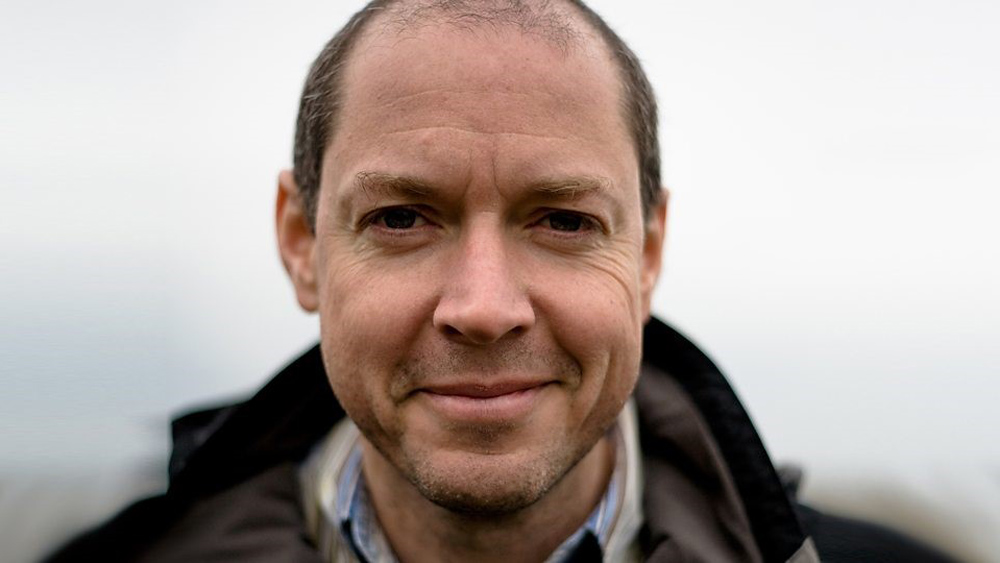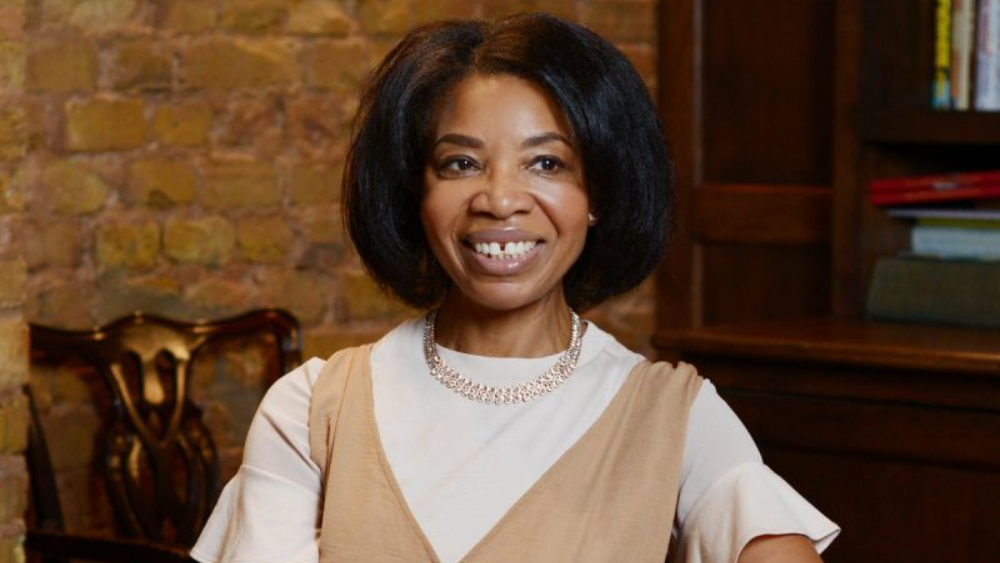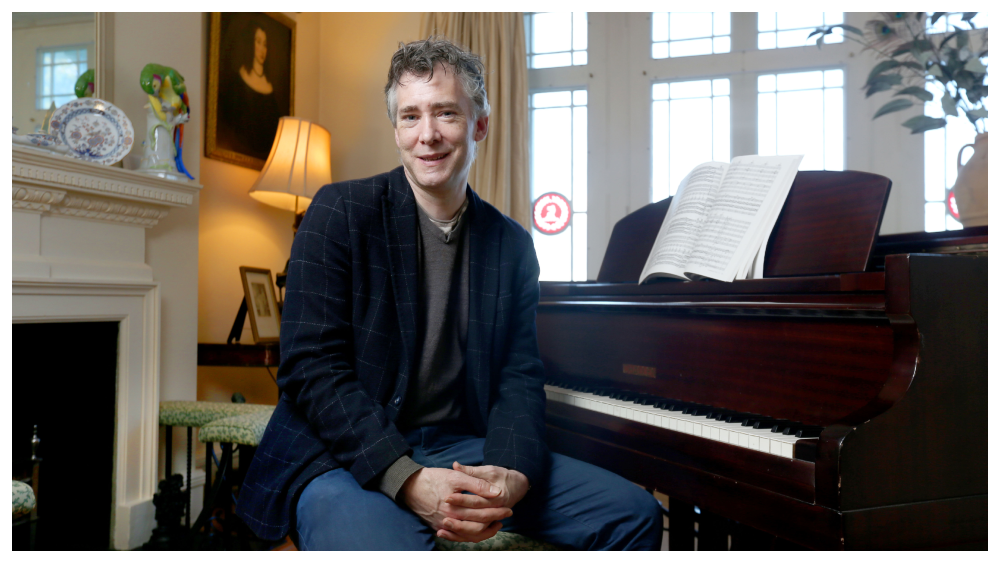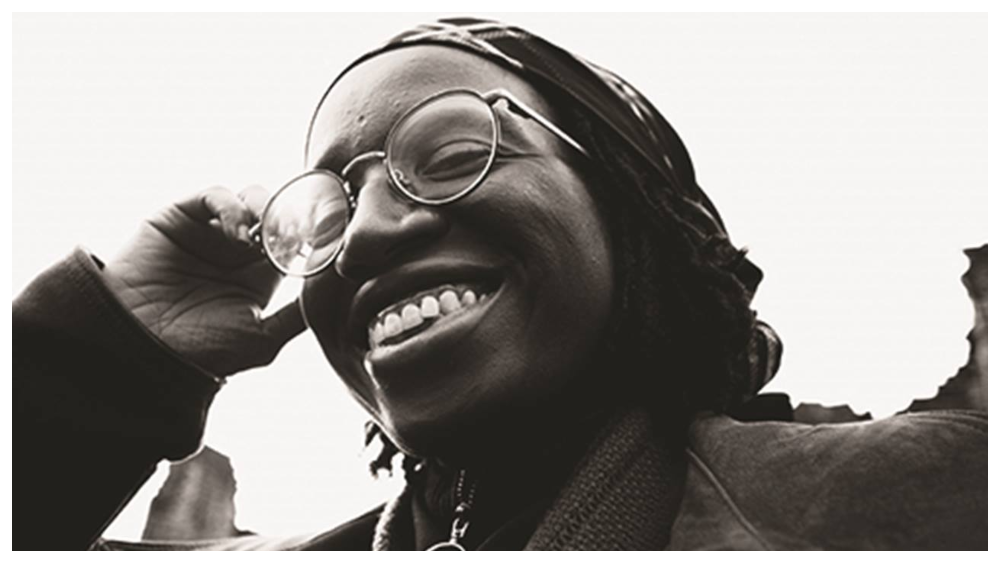‘The whole project emerged out of discovering a shared sense of artistic ambition and aesthetic appeal’ says composer Dominic Murcott of his bold new project The Harmonic Canon.
Murcott’s career path has been somewhat unconventional; having started as a self-taught musician his early forays into music included playing drums for post punk band Blurt before picking up the vibraphone for avant-pop practitioners The High Llamas.
Alongside moving into composition, Murcott has increasingly become involved with education, running the Trinity Laban Composition Department since 2003.
In 2018 he picked up the BASCA British Composer Award and this year sees the release of his ambitious project The Harmonic Canon via Nonclassical.
The piece is for percussion duo who play a custom built half ton bronze bell designed by sculptor Marcus Vergette.
Here we chat to the composer about the challenges and rewards of his latest project, his take on contemporary music in the UK and more…
What’s the thinking behind The Harmonic Canon?
The idea of a huge bell as a mobile instrument came from Marcus Vergette, the bell maker. It came without any requirements or limitations so I gradually developed my own brief, which became: to write a piece for two percussionists, to use only metal instruments, to write two 21’ movements so it would fit on two sides of an LP, to create something that was effective both as a live performance and a recording, and to create a work that could appeal to an academic contemporary classical audience as well as working for families and wider communities.
The bell itself, which like the piece is also called The Harmonic Canon, is actually two connected quarter-tonne bells tuned a semi-tone apart, with a common partial between them for added sonic intrigue. Computer designed, there are ridges on it, which produce different tones when struck, and the whole thing can rotate in its cradle producing Doppler-like modulations.
What was the process of collaborating with sculptor Marcus Vergette like?
The best! The whole project emerged out of discovering a shared sense of artistic ambition and aesthetic appeal. There was trust from the very beginning, which was important because we very unlikely to make any money from it! As well as being a sculptor and a jazz double bassist (he is a long-standing member of the Mike Westbrook Orchestra), he farms 100 acres in Devon. I spent much of my childhood on a farm and love spending time with him there. A common appreciation of calvados also helps.
Murcott’s career path has been somewhat unconventional; having started as a self-taught musician his early forays into music included playing drums for post punk band Blurt before picking up the vibraphone for avant-pop practitioners The High Llamas.
Alongside moving into composition, Murcott has increasingly become involved with education, running the Trinity Laban Composition Department since 2003.
In 2018 he picked up the BASCA British Composer Award and this year sees the release of his ambitious project The Harmonic Canon via Nonclassical.
The piece is for percussion duo who play a custom built half ton bronze bell designed by sculptor Marcus Vergette.
Here we chat to the composer about the challenges and rewards of his latest project, his take on contemporary music in the UK and more…
What’s the thinking behind The Harmonic Canon?
The idea of a huge bell as a mobile instrument came from Marcus Vergette, the bell maker. It came without any requirements or limitations so I gradually developed my own brief, which became: to write a piece for two percussionists, to use only metal instruments, to write two 21’ movements so it would fit on two sides of an LP, to create something that was effective both as a live performance and a recording, and to create a work that could appeal to an academic contemporary classical audience as well as working for families and wider communities.
The bell itself, which like the piece is also called The Harmonic Canon, is actually two connected quarter-tonne bells tuned a semi-tone apart, with a common partial between them for added sonic intrigue. Computer designed, there are ridges on it, which produce different tones when struck, and the whole thing can rotate in its cradle producing Doppler-like modulations.
What was the process of collaborating with sculptor Marcus Vergette like?
The best! The whole project emerged out of discovering a shared sense of artistic ambition and aesthetic appeal. There was trust from the very beginning, which was important because we very unlikely to make any money from it! As well as being a sculptor and a jazz double bassist (he is a long-standing member of the Mike Westbrook Orchestra), he farms 100 acres in Devon. I spent much of my childhood on a farm and love spending time with him there. A common appreciation of calvados also helps.
You’ve spoken about creating 21-minute pieces as ‘a gentle demand for the track-skipping listener’: how do you think the digitisation of music has affected how artists create?
Online digitisation has created an unlimited pool of single tracks that can be experienced in isolation. We cope with this by auditioning music rapidly and demanding immediate gratification. There is a pressure to make the first sounds of a recording jump out. Calling a series 21 Minutes simply encourages listeners to consider the whole work and perhaps allow it time to impress.
What did you hope to achieve with The Harmonic Canon?
Something that could be both serious and entertaining. One factor was to take advantage of the physical beauty of the object, and the fact that it can spin with incredible fluidity in its frame. Add an expanse of metal percussion and you have a very visual work that is engaging without needing any classical music knowledge. Another key factor is the sound of bells. Every civilization that developed the ability to cast metal made bells sooner or later. Their particular detuned quality and symbolic familiarity seems to appeal to humans everywhere.
What has the experience of performing this work live been like, and what challenges did it raise?
Touring the piece has been great fun and very hard work. We’ve had great responses from audiences, particularly those who don’t go to contemporary classical events, many of whom have said how unique the experience was.
The music is very hard to play, partly because of the huge distances between instruments, but also because getting this huge array of percussion and the bell itself into a suitable rehearsal space limited practice time. Luckily the arx duo are amazing and make it look easy(ish!). The most basic challenge has been how to transport the bell and get it into venues. Marcus has come up with a fabulous system that allows the whole bell to be lowered onto its trolley, then split into two separate pieces that can be rolled onto the tail-lift of a Luton van with modest effort.
How did it feel to win the BASCA British Composer award for this work last year?
Wonderful, life-affirming. Starting as self-taught drummer, I’ve worked in the contemporary classical world for many years as something of an outsider. I think winning this has had an effect on how my work is received by others. Competitions are strange things: they don’t measure absolute quality, just a particular view. I do know however that a panel of five established composers deliberated over this, so it feels really special to have won.
The project was partially supported by PRS Foundation. How did the funding help and what did it go on?
We’ve received relatively little public funding for the whole project, less than a quarter of the overall cost. However, PRS Foundation has been our major supporter and the composition of the new work and the performances simply would not have happened without it. Once the bell was made the duo had to be brought over from Seattle, percussion hired (generously sponsored by Bell Percussion for this tour), venues hired, a van hired, accommodation, insurances etc. etc.
What impact has your relationship with Gabriel Prokofiev and Nonclassical impacted your career and work?
I met Gabriel right at the start of nonclassical and have been involved with the label in various ways ever since. Everyone is into classical and electronic music now, but when I met Gabriel it was less common to find someone who shared an equal interest in both.
You ran some Harmonic Canon workshops, how was that?
Great fun. I’m a very playful person so I love running kids’ workshops and getting involved at their level. The workshops were meant to give the participants, kids in particular, access to textural music making ideas. At the Tinners Moon festival in Devon, many of them came back for the show in the evening and sat through some long and quite demanding music with apparent ease.
Post tour, what’s next for the instrument and where/how do you store it?
It currently lives at the Old Royal Naval College in Greenwich and anyone can come and see it. It is designed as a piece of public art so it should always be on display somewhere. There is time for a few more shows in Europe in the coming year, then it goes to the US where the arx duo will spend as long as they like traveling and touring with it. Perhaps for many years to come. We’ve no idea where it will eventually end up. It will probably outlive us all.
What’s your take on contemporary music in the UK right now?
The first thing is that, like all music these days, there is no singular scene. Everything is fragmented and different communities can thrive while being almost invisible from each other. I’ve always liked the margins between classical music, pop and jazz but these terms themselves have become entirely inadequate at describing the incredible variety of music being made.
I’m often frustrated by the dominance of classical music lovers who like the canon because it is fixed and unchanging, without considering that it was the ‘new’ when it was created. This seems to be reinforced by a classical music education system that removes adventure and invention from children’s learning as soon as it possibly can. What I am delighted to see however is the huge number of young players at colleges like Trinity Laban who take such pride in working with young composers, and indeed compose and improvise their own music. Let’s see what they bring to contemporary music over the coming years.
dominic-murcott-5nrp.squarespace.com
Online digitisation has created an unlimited pool of single tracks that can be experienced in isolation. We cope with this by auditioning music rapidly and demanding immediate gratification. There is a pressure to make the first sounds of a recording jump out. Calling a series 21 Minutes simply encourages listeners to consider the whole work and perhaps allow it time to impress.
What did you hope to achieve with The Harmonic Canon?
Something that could be both serious and entertaining. One factor was to take advantage of the physical beauty of the object, and the fact that it can spin with incredible fluidity in its frame. Add an expanse of metal percussion and you have a very visual work that is engaging without needing any classical music knowledge. Another key factor is the sound of bells. Every civilization that developed the ability to cast metal made bells sooner or later. Their particular detuned quality and symbolic familiarity seems to appeal to humans everywhere.
What has the experience of performing this work live been like, and what challenges did it raise?
Touring the piece has been great fun and very hard work. We’ve had great responses from audiences, particularly those who don’t go to contemporary classical events, many of whom have said how unique the experience was.
The music is very hard to play, partly because of the huge distances between instruments, but also because getting this huge array of percussion and the bell itself into a suitable rehearsal space limited practice time. Luckily the arx duo are amazing and make it look easy(ish!). The most basic challenge has been how to transport the bell and get it into venues. Marcus has come up with a fabulous system that allows the whole bell to be lowered onto its trolley, then split into two separate pieces that can be rolled onto the tail-lift of a Luton van with modest effort.
How did it feel to win the BASCA British Composer award for this work last year?
Wonderful, life-affirming. Starting as self-taught drummer, I’ve worked in the contemporary classical world for many years as something of an outsider. I think winning this has had an effect on how my work is received by others. Competitions are strange things: they don’t measure absolute quality, just a particular view. I do know however that a panel of five established composers deliberated over this, so it feels really special to have won.
The project was partially supported by PRS Foundation. How did the funding help and what did it go on?
We’ve received relatively little public funding for the whole project, less than a quarter of the overall cost. However, PRS Foundation has been our major supporter and the composition of the new work and the performances simply would not have happened without it. Once the bell was made the duo had to be brought over from Seattle, percussion hired (generously sponsored by Bell Percussion for this tour), venues hired, a van hired, accommodation, insurances etc. etc.
What impact has your relationship with Gabriel Prokofiev and Nonclassical impacted your career and work?
I met Gabriel right at the start of nonclassical and have been involved with the label in various ways ever since. Everyone is into classical and electronic music now, but when I met Gabriel it was less common to find someone who shared an equal interest in both.
You ran some Harmonic Canon workshops, how was that?
Great fun. I’m a very playful person so I love running kids’ workshops and getting involved at their level. The workshops were meant to give the participants, kids in particular, access to textural music making ideas. At the Tinners Moon festival in Devon, many of them came back for the show in the evening and sat through some long and quite demanding music with apparent ease.
Post tour, what’s next for the instrument and where/how do you store it?
It currently lives at the Old Royal Naval College in Greenwich and anyone can come and see it. It is designed as a piece of public art so it should always be on display somewhere. There is time for a few more shows in Europe in the coming year, then it goes to the US where the arx duo will spend as long as they like traveling and touring with it. Perhaps for many years to come. We’ve no idea where it will eventually end up. It will probably outlive us all.
What’s your take on contemporary music in the UK right now?
The first thing is that, like all music these days, there is no singular scene. Everything is fragmented and different communities can thrive while being almost invisible from each other. I’ve always liked the margins between classical music, pop and jazz but these terms themselves have become entirely inadequate at describing the incredible variety of music being made.
I’m often frustrated by the dominance of classical music lovers who like the canon because it is fixed and unchanging, without considering that it was the ‘new’ when it was created. This seems to be reinforced by a classical music education system that removes adventure and invention from children’s learning as soon as it possibly can. What I am delighted to see however is the huge number of young players at colleges like Trinity Laban who take such pride in working with young composers, and indeed compose and improvise their own music. Let’s see what they bring to contemporary music over the coming years.
dominic-murcott-5nrp.squarespace.com





